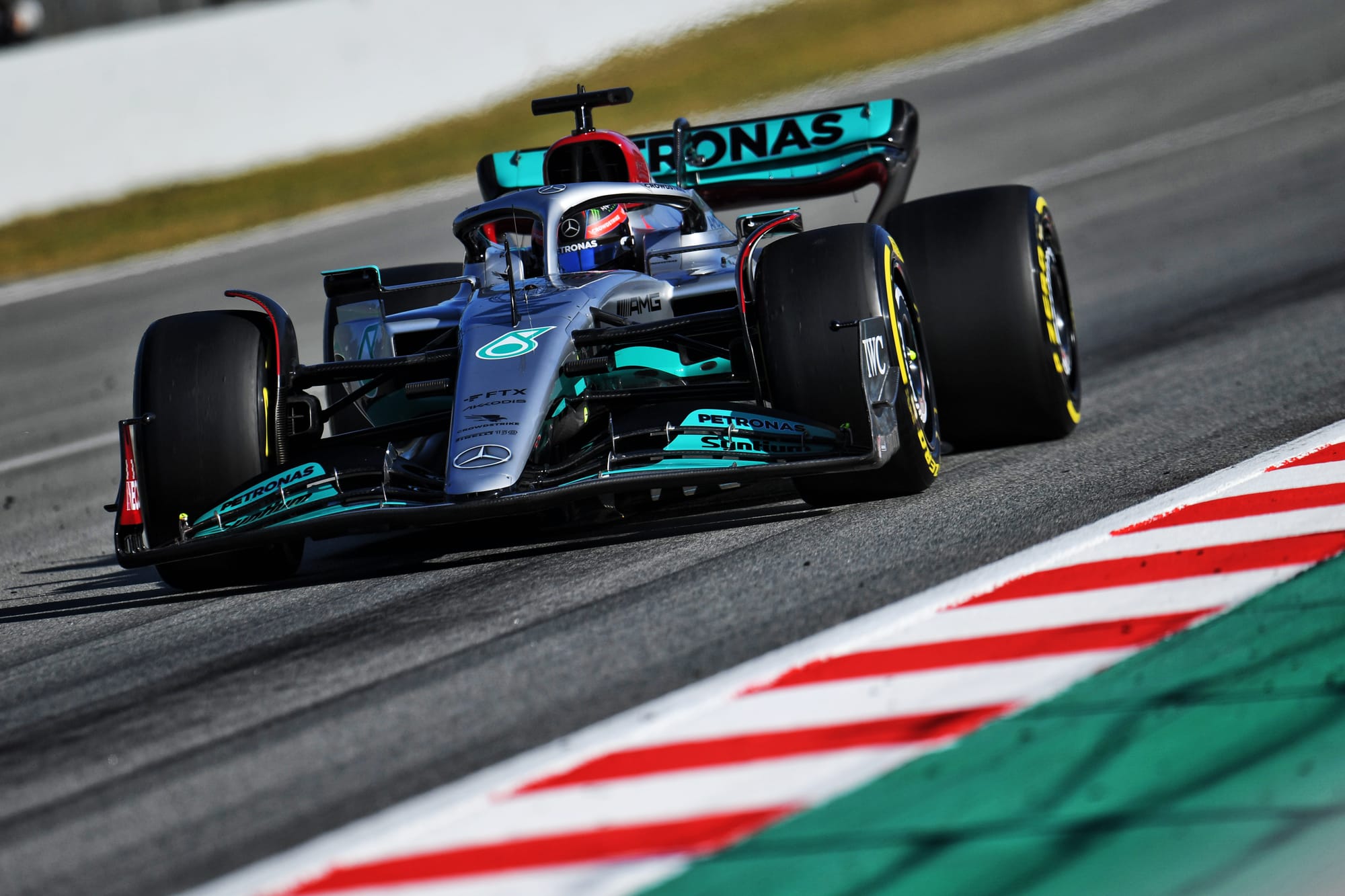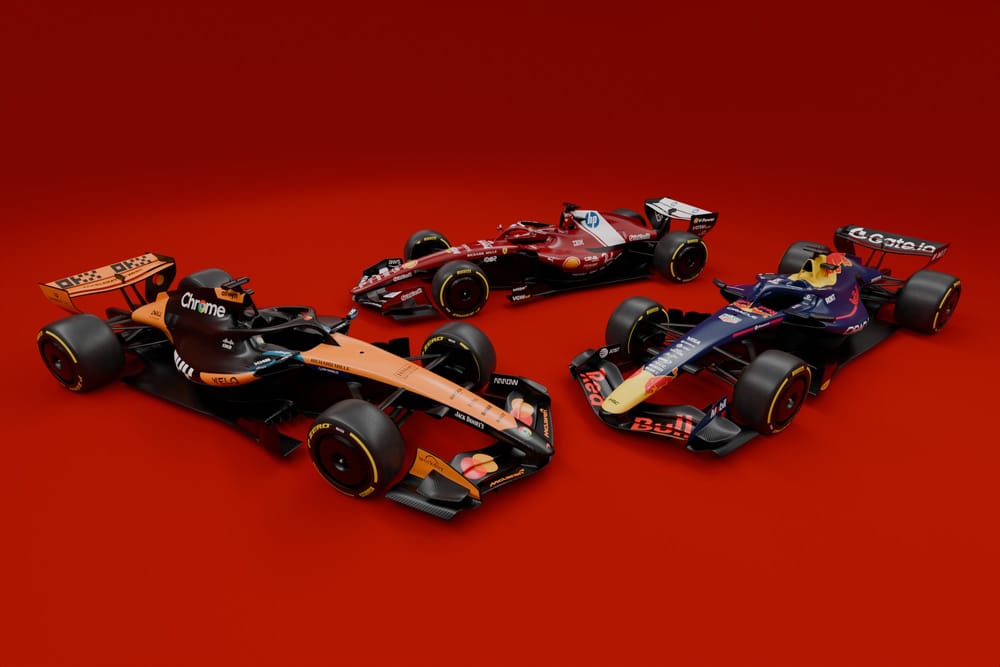Formula 1's major rules shake up continues to intrigue as nobody can be sure what the 2026 cars will really be like when they hit the track for the first time.
But this same uncertainty that's so fascinating for us on the outside leaves those designing the cars with quite different feelings.
While clean-sheet regulations such as the impending chassis and engine overhaul open opportunities for a shake-up of the order, and a potential major leap forward for any squad that has nailed its understanding of what’s needed, equally there is a very real danger for some to have got it wrong.
Teams could find themselves having pursued a development path that is not right for what the new rules need, or they could have missed some key design element that they only get to spot when others are running it.
It is little wonder then that Haas technical director Andrea De Zordo says that as teams have begun to dig deeper into the rules, and realised some of the complexities in play, that there is a nervousness about whether key design decisions are correct.
One of the main areas where this is true is in trying to understand where to pitch downforce and drag levels for the new moveable wings so that they fit in perfectly with the characteristics of the new power units.
There is a lot of uncertainty about how to balance wing levels, especially because the sweet spot has to be perfectly linked with battery deployment.
Too much drag down a straight could see drivers burn through the energy quicker, but not enough downforce could prove very costly in the corners.
Plus there is also an element that the final answer for what will work best cannot be ticked off until a team knows what everyone else is doing.
With teams therefore in the dark about where they stack up, it is not hard to see why lingering doubts about work being done right now have emerged.
"It's probably the side that scares me and scares all the people," explained De Zordo.
"I'm sure we will discover a lot of things when we use the car for the first time. There is a lot of performance in it and missing something at this stage is very easy.
"All the power units are very new, and I think even for the PU supplier they are still discovering things. It's a very big challenge, and I'm sure we will learn a lot in all the first part of the season."
Update plans
De Zordo said that, because of the rapid learning process that teams will go through at the start of the season, teams' update plans cannot be sorted yet because they don't know just how much will be needed early on.
There could be a requirement to respond to new designs if rivals appear with something clever at the first test, but there will not be enough time to react between then and the first race.
"We have already spent a lot of time thinking to prepare for next year, and it's impossible now to fix a proper plan," he explained.
"So it must be a plan with some options with step by step updates that we will do.
"We are trying to be aggressive by sending production as late as possible for the package for race one, because we cannot prepare this one after we have done the test.
"So it's something that will be in advance of the first test.
"We are pushing as much as possible for this one. After the first test, we'll see. It's all to be discovered."
Expecting the unexpected

Many teams found to their cost at the start of 2022 that new rules can throw up unexpected headaches.
The early phase of the current ground effect era was dominated by struggles that a lot of squads faced with porpoising.
One of those that struggled the most with this was Mercedes, which said that its difficulties came despite it thinking it had done enough preparation.
Mercedes trackside engineering director Andrew Shovlin said: "It was the things that you couldn't see coming that caught us out."
But while porpoising has been tamed a lot since 2022, and should be even less of a factor next year with ground effect being reduced, Shovlin said that teams cannot be blind to some surprises from the 2026 rulebook - either from what the regulations produce or their own performance.
"There's always going to be traps and there's always going to be teams that are disappointed with the job they've done," he explained. "You would never walk into a new set of regulations thinking it'll be straightforward.
"There is always the challenge of trying to get a new formula balance correct.
"We can do work in the simulators, but really, until you start running the car on track, you don't know exactly how it's going to behave."
Complicated designs
De Zordo suggested that the new cars are not simple machines, revealing that the design and manufacturing process has been harder than with recent rulesets.
"From '25 it's a complete change of mind," he said. "The first difficult thing has been to homologate the chassis. So we have done a lot of work to make it happen.
"The chassis has been one of the most complex car projects that we have done and so initially the focus was a lot on that. Now we are switching more in trying to find a proper performance.
"For example, how you do the front wing, the detail of the mechanism took a lot of time. But even then it was important to have something reliable and small.
"All these kinds of things take time. So now we are trying to sort it out. This is the basic layout and we are trying to push more in the performance cycle."
De Zordo also said that while some of Haas's life is made easier by taking parts from Ferrari, that is not without its complications.
"We are receiving updates sometimes even at the last moment. and so sometimes they constrain us in some way," he added.
"Maybe we have been thinking about something different but we receive an update and we say, 'OK, now what we do?' Because we have to accommodate that.
"I think in some respects you have less things to do, but even less time to react."



